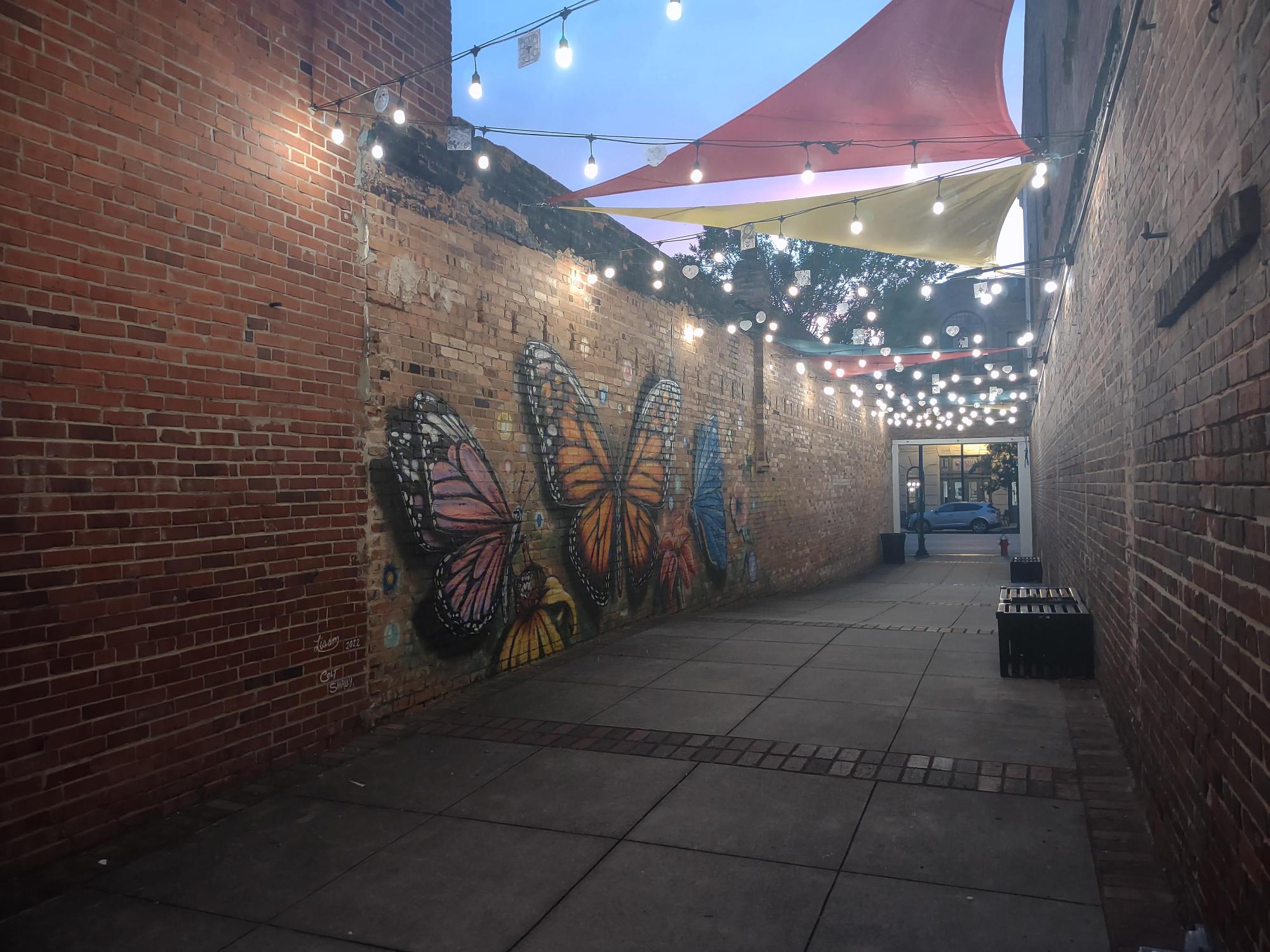
The City of Camden has used artwork and other improvements to create an attractive alley
passageway for pedestrians along Broad Street. Photo: City of Camden.
Cultural districts, offering a chance to explore everything from public art to historic buildings and live theater, are often the heart and soul of a city.
These walkable geographic areas, formally designated by the South Carolina Arts Commission, celebrate the vibrance and cultural footprint of each city, driving tourism and allowing residents to take pride in their communities, said Harvee White, public art coordinator for the SC Arts Commission.
In the 10 years since the General Assembly passed legislation authorizing the South Carolina Arts Commission to designate cultural districts, 11 districts have been established around the state. The goal of the program is to attract artists, creative entrepreneurs and cultural enterprises to communities; encourage economic development; foster local cultural development; and provide a focal point to celebrate and strengthen local cultural identity.
“The mission of the South Carolina Arts Commission is to promote equitable access to the arts and support the cultivation of creativity in South Carolina. This program is one of the ways that we strive toward that mission,” White said. “Cities across the state are thinking about how they can contribute to making their communities more vibrant through creative placemaking.”
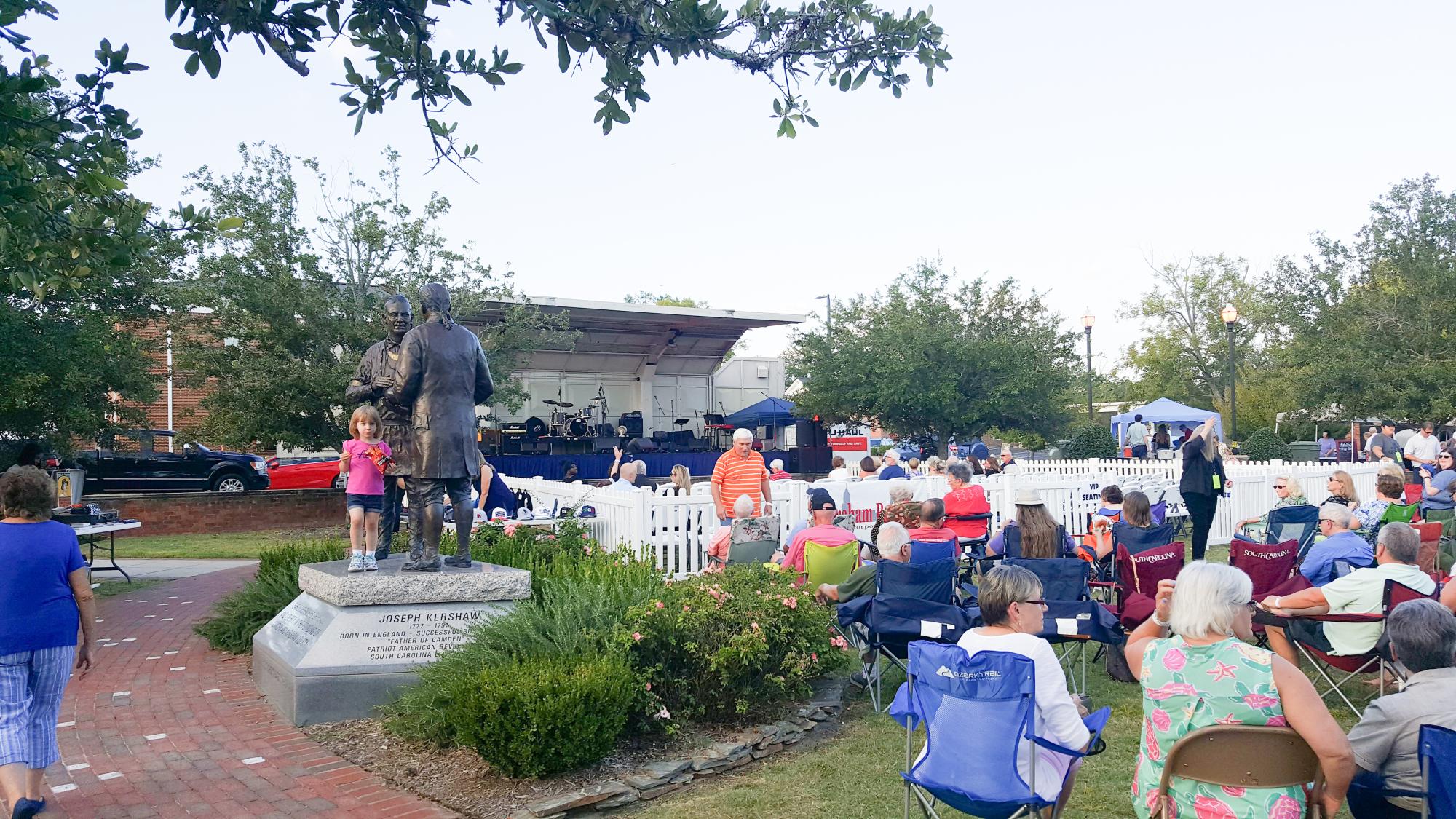
Camden’s downtown Town Green is home to a free concert series.
Photo: City of Camden.
And it’s not just the large cities that are participating.
“The program shows that you don’t have to travel to South Carolina’s largest cities to have access to the arts — the entire state is filled with creative people and places,” she said.
Those creative people and places help all of South Carolina. A 2023 economic impact study showed the state’s creative sector generates $14.1 billion for the state, with the number reflecting direct and indirect demand generated by the local spending activity of all arts-related businesses, their suppliers and their employees, White said.
“Cultural districts are a part of that economic engine, and inspire art-related economic growth,” she said.
The 11 districts network with each other, using the program to share information and ideas, while the Arts Commission also has a grant program available only to designated cultural districts, with plans to provide additional grant opportunities in the future.
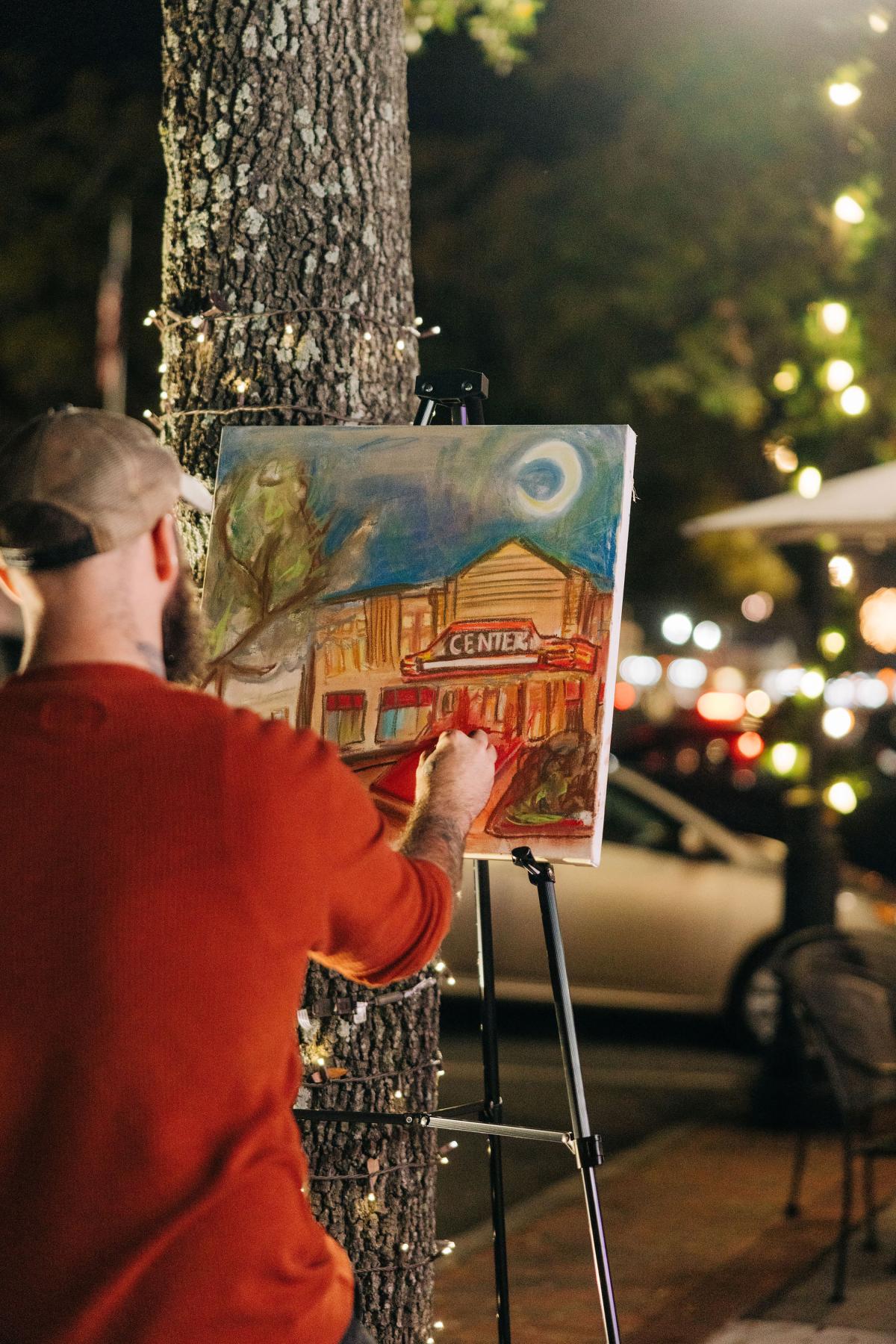
Scott Taylor paints Hartsville’s Center Theater during the Heart of the Holidays Art and Wine Walk.
Photo: 2nd Floor Media.
Earning a cultural district designation takes time and commitment. Cities typically start by forming a committee of artists and business owners who work together to assess the area and set geographic boundaries. It needs to be a walkable area that is home to a large number of cultural assets.
“We largely value community input, so part of that process is inviting the public to help create a map of the cultural offerings, which can include murals, festivals and markets, museums, theaters, et cetera,” White said. “They are also required to create a strategic plan for the next five years. This helps them plan for the future. They can use it to set both big and small goals for how they can grow their district — not just in size, but in offerings as well.”
There are many moving parts to becoming a designated district, so the Arts Commission works closely with potential districts. Once the materials are gathered and the application is completed, the districts present it to the commission’s board, which votes whether to approve the district.
Hartsville is home to one of the newest cultural arts districts in the state, announcing its designation earlier this year. With Coker University, the SC Governor’s School for Science and Math, multiple performing and visual arts spaces, distinctive historic architecture and a number of nationally recognized artists who had their start in Hartsville, the city has long celebrated and supported the arts. The new “hARTSville” district in the heart of the city includes the Hartsville Museum and Gallery, Sculpture Courtyard, Center Theater, galleries, murals and other attractions.
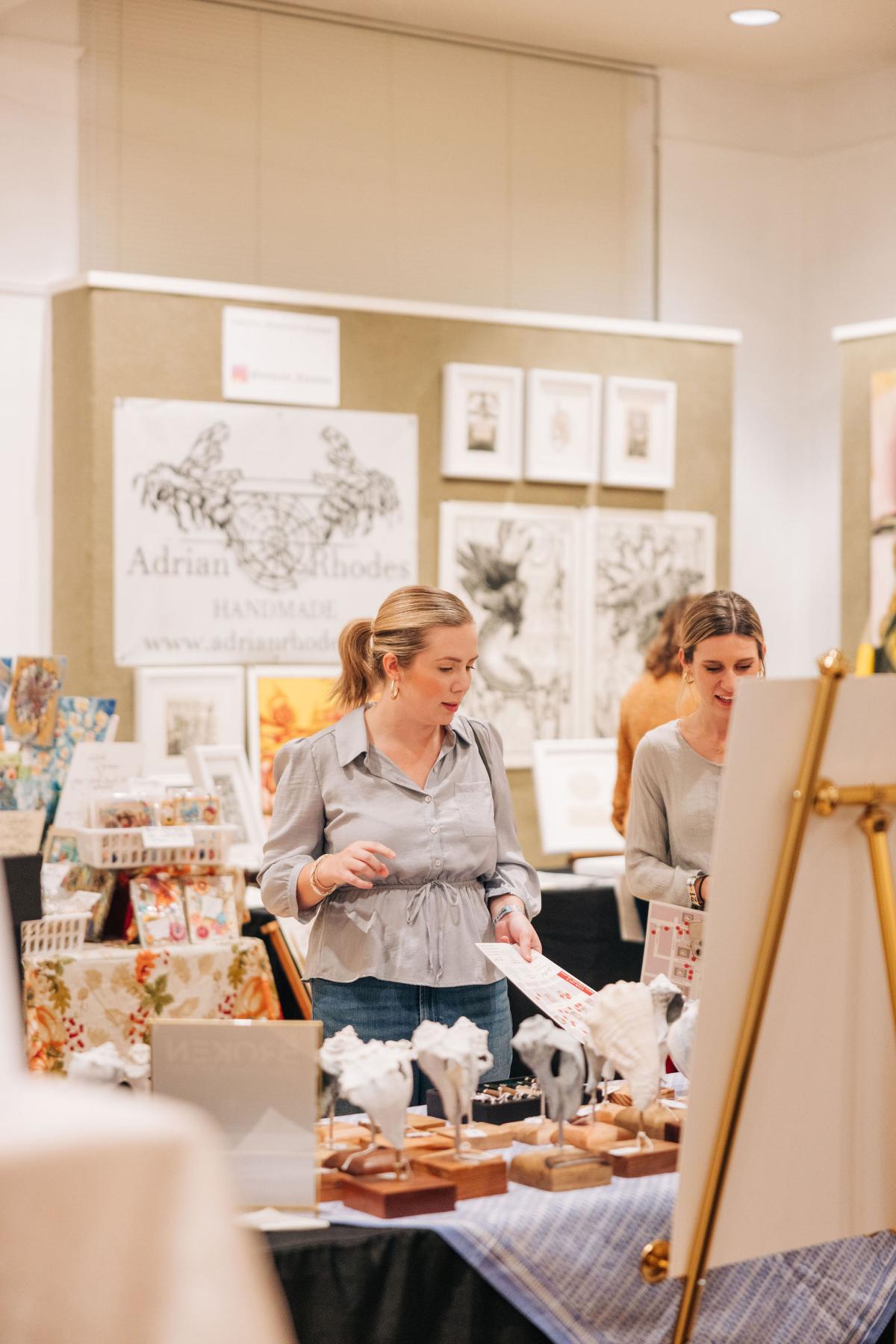
Shoppers follow a map of event locations around downtown Hartsville during the
Heart of the Holidays Art and Wine Walk. Photo: 2nd Floor Media.
“Arts and culture have always been a big part of Hartsville’s tourism and just what makes Hartsville special,” said Matt Winburn, Main Street Hartsville manager.
Two of the cultural district’s inaugural events sold out: the Spring Art and Wine Stroll, and the Heart of the Holidays Art and Wine Walk.
Winburn said the city uses arts and culture as part of its toolkit for economic development and tourism as it markets downtown as the hub of cultural life. It also extends its promotion and does a lot of cross-promotion with the south Hartsville community.
He said achieving the cultural arts designation is a thorough process, starting with a resolution by the city council to show evidence of a good-faith effort by the city.
“We have a strategic and marketing plan, and have to show an effort that we are making the arts and culture a prominent part of the city’s programming planning moving forward,” he said. “The cultural arts district is recertified every five years. So we make sure when we are up in five years we can say, ‘this is what we started with, and this is what we’ve accomplished and this is what we’re planning to accomplish in the next five years.’”
His advice for other cities is to lean heavily on the Arts Commission’s team, which offers a great resource to walk cities through the process, and involve the arts and business community in every step.
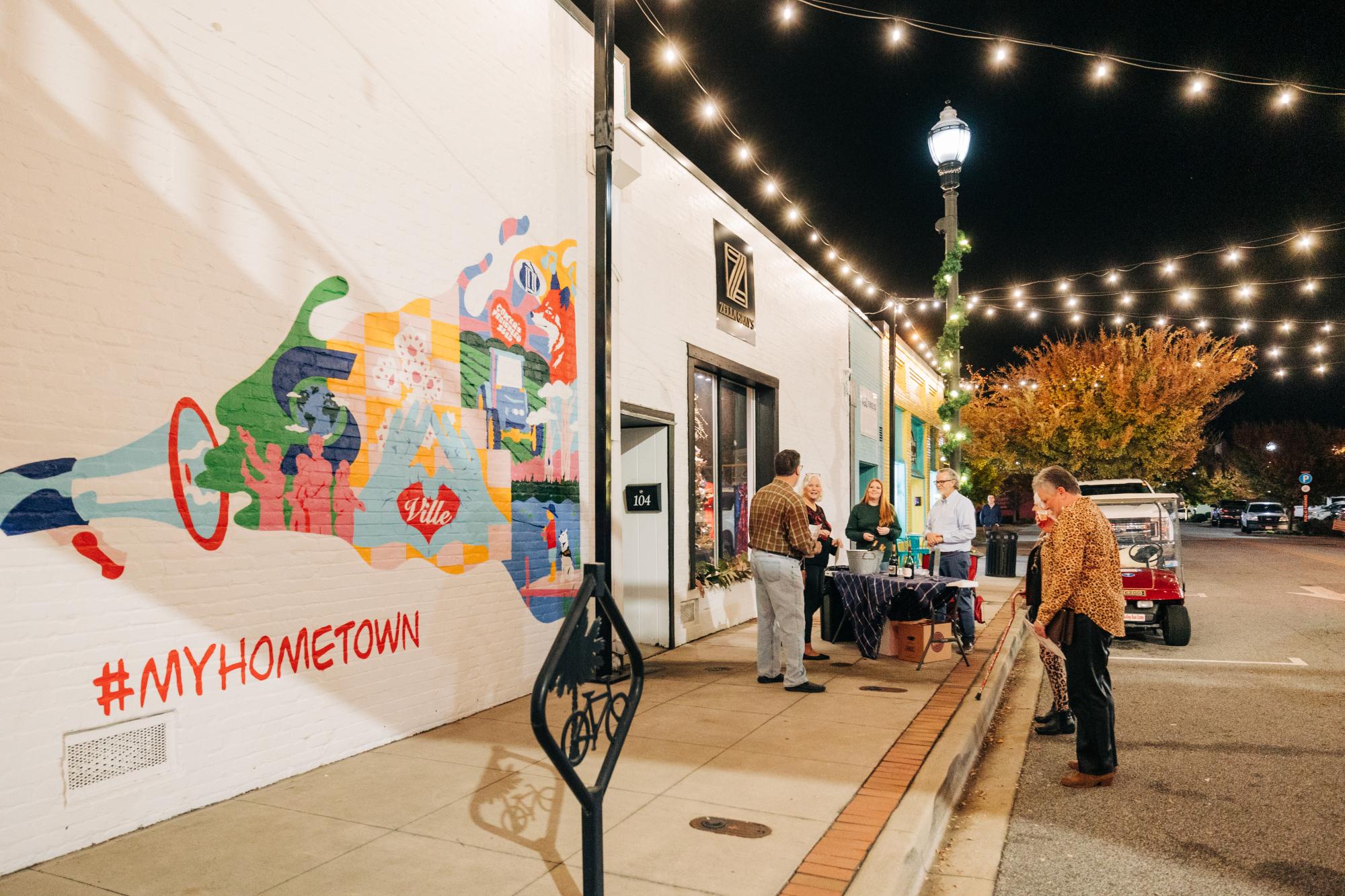
College Avenue in downtown Hartsville is home to murals celebrating Hartsville’s
community and history. Photo: 2nd Floor Media.
He also suggested that cities spend some time thinking about what sets each community apart.
“Culture is defined by the community and the people in it. Every city has a different culture,” he said. “It’s not a one-size-fits-all program. For those considering this program, tap into what culture means for your community. Build upon that. Don’t compare yourself to other cities, because they will be different from what you are.”
When Camden was designated as a cultural district four years ago, South Carolina’s oldest inland city already had a strong arts scene. The designation by the Arts Commission helped to spread the word.
“We’ve known for decades that arts and culture in the downtown area is a significant economic driver. This designation is the recognition for that,” said Katharine Spadacenta, Camden’s community development coordinator.
She said while people expect larger cities around the state to have a thriving arts community, they may not always recognize that Camden, with its 7,800 people, is also home to a vibrant arts district.
“It’s one more callout to folks who are interested in exploring the arts and culture scene in South Carolina to include Camden in their travels,” Spadacenta said.
The cultural district committee is creating a public art policy to help define and catalogue the pieces in town. While the city has much public art, there is not a map of the locations or guidelines for new pieces. Working with the Arts Commission and cultural district program staff, the city will have a plan in place at it explores future projects.
“There’s been talk from merchants and property owners and artists in the community, and there’s definitely interest in including a few more downtown murals,” she said. “We already have several — some exterior, some interior. There’s a desire to create more in a strategic way in the downtown.”
Over the past few years, there’s been a large private investment in restoring some of Camden’s significant historic buildings downtown, with an interest in incorporating arts and culture in the renovations and the nearby areas.
She echoed the importance of collaboration among business owners and artists as a way to make cultural districts thrive.
“One of the things that’s assisted in promoting the cultural district the most is getting some of our businesses, our galleries, our artist spaces to collaborate in a way that allows us to drive traffic,” Spadacenta said. “We’ve done gallery crawls for years. Now we’ve expanded the number of galleries and artists spaces in the downtown district. You’ve got to make sure all the cooperative components are working together.”
Learn more at SC Arts Commission.
